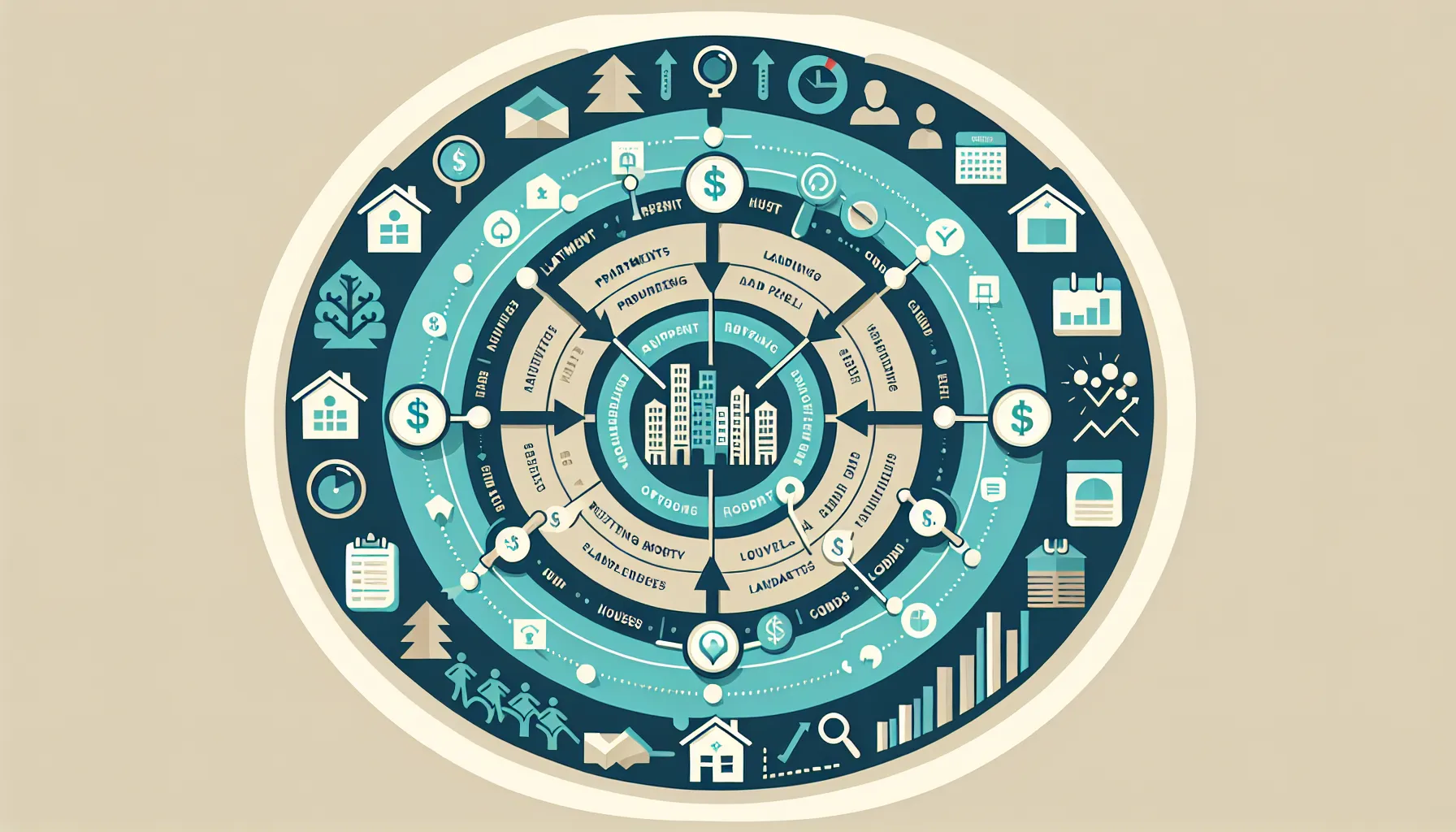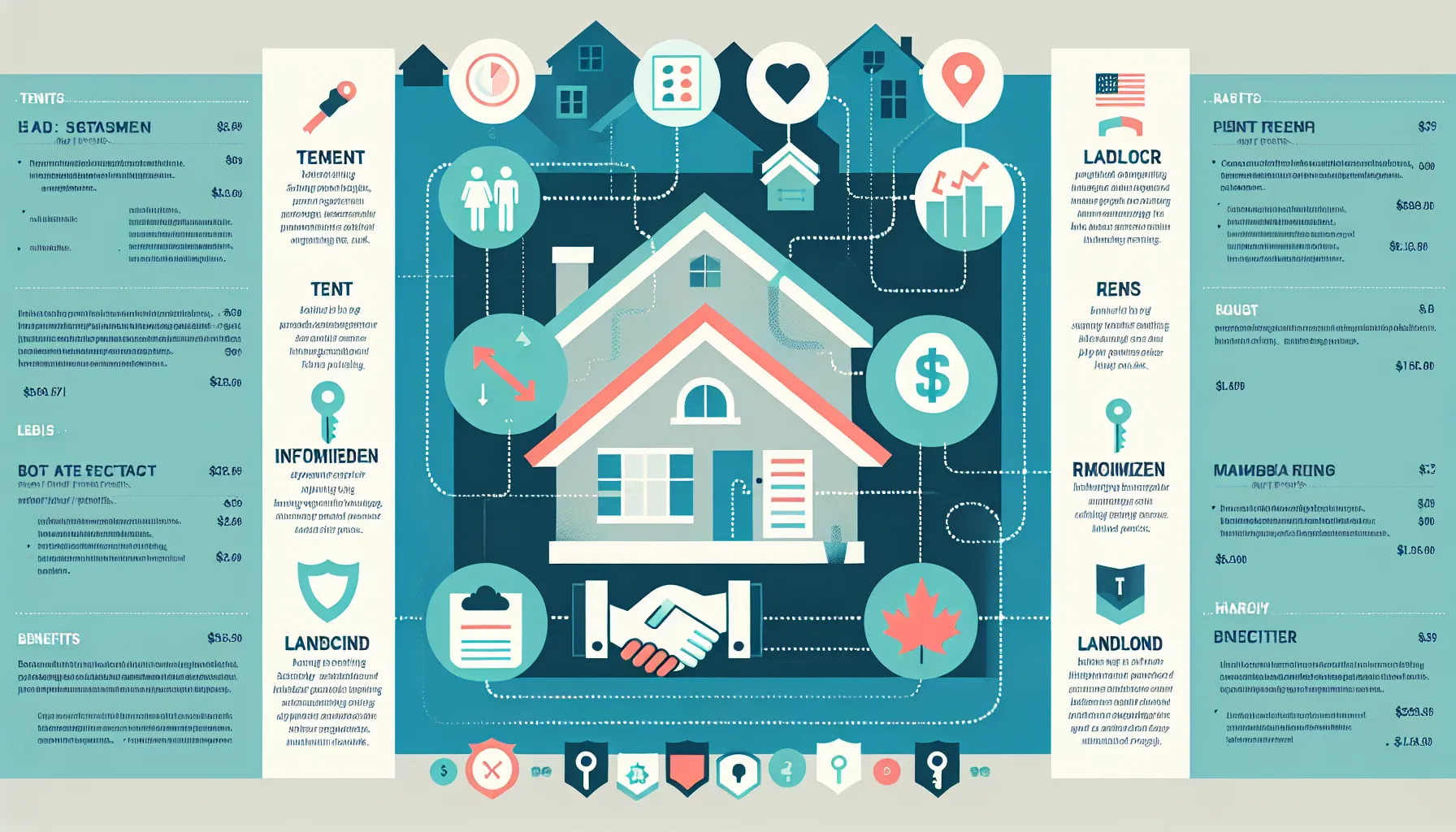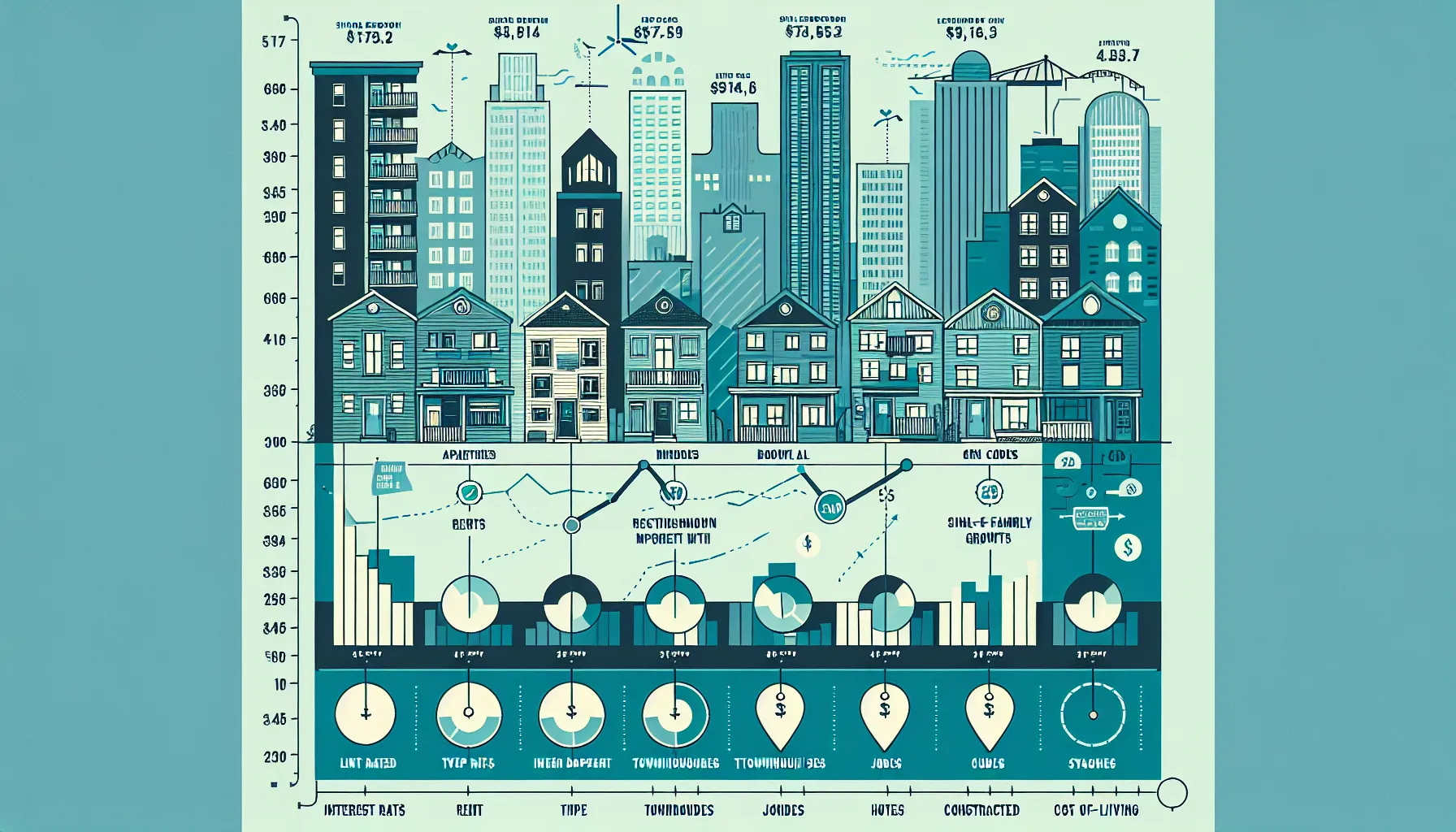Rent prices can feel like a moving target, whether you’re searching for a place to call home or managing an investment property in Pleasant Hill. I know firsthand how important it is to feel confident about your rent, no one likes unwelcome surprises. Have you ever wondered how to get a clear picture of rent trends or stay in control as rents shift? You’re not alone. Reliable rent tracking is the foundation for peace of mind, smart decisions, and fair outcomes for everyone involved. In this guide, I’ll break down what rent tracking means for Pleasant Hill, why it matters, and how you can use the best tools and strategies to stay ahead.
Key Takeaways
- Regular Pleasant Hill rent tracking helps both tenants and landlords stay informed and avoid unexpected rent changes.
- Monitoring local rent trends enables smarter decisions and fair negotiations during lease renewals or property management.
- Utilizing tools like online listing aggregators, property management reports, and spreadsheet tracking ensures accurate, up-to-date rent data.
- Familiarity with California’s rent control laws is essential for staying compliant and avoiding disputes in Pleasant Hill.
- Scheduling monthly reviews and open communication between tenants and landlords create transparency and reduce rental market stress.
Understanding Rent Tracking in Pleasant Hill

At its core, rent tracking means regularly monitoring and recording changes in rental prices across different types of properties within Pleasant Hill. This isn’t just about glancing at online listings once in a while. It’s about building a real sense of what’s happening as the market shifts, whether you’re a landlord optimizing returns or a tenant budgeting for the year ahead.
In Pleasant Hill, rent tracking offers a snapshot of market health, affordability, and consistency. If you’re an investor or homeowner, keeping records of local listings, lease renewals, and rent increases is a key part of making sound choices. If you’re renting, knowing the going rates for similar properties nearby helps you spot fair deals and be prepared for renewal discussions.
Accurate rent tracking also empowers all parties during lease negotiations and when projecting future cash flow. With Pleasant Hill’s proximity to major Bay Area hubs, demand can change quickly, so staying up to date is critical.
Why Rent Tracking Matters for Tenants and Landlords

Have you ever been caught off guard by a rent hike, or struggled to fill a rental unit because your price was out of step with the neighborhood? That’s where rent tracking comes into play.
For tenants: Up-to-date rent data helps you know if you’re paying a competitive rate, negotiate more confidently, and plan ahead for potential rent increases. You’ll spot trends that could affect your long-term housing choices, whether you’re planning to renew or look elsewhere. There’s real power in being well-informed.
For landlords: Rent tracking is your compass. It prevents undervaluing (which eats into returns) and overpricing (which leads to longer vacancies). With accurate numbers at your fingertips, you can adjust asking prices quickly, respond to market shifts, and demonstrate transparency to current and future tenants.
For both sides, the process creates a foundation of fairness, and that helps avoid misunderstandings, minimize disputes, and build better landlord-tenant relationships. Who doesn’t want that sense of clarity and control?
Current Rental Market Trends in Pleasant Hill

Rental conditions in Pleasant Hill mirror much of what we’re seeing across Contra Costa County, steady demand, supply challenges, and ongoing pressure from the nearby Bay Area job market. I’ve seen property owners and tenants alike adapt to change by watching real-time data, not rumor.
Average Rent Prices By Property Type
For 2025, single-bedroom apartments in Pleasant Hill tend to rent in the $2,100–$2,400/month range, while two-bedroom condos often fall between $2,600 and $3,100. Detached single-family homes, especially those within walking distance of BART or top-rated schools, frequently list from $3,500 up to $4,500 or more, depending on amenities and condition.
Townhomes and duplexes sit in the middle, with rent averaging from $2,800 to $3,600, reflecting their appeal for families still wanting a bit more space but with shared walls. These figures can shift seasonally, spring often sees a spike as school calendars change, and tech sector moves ripple eastward from Oakland and San Francisco.
Recent Rent Fluctuations and Causes
Over the past year, Pleasant Hill’s average rents haven’t dropped, but growth rates have slowed. After the rapid increases common during and just after the pandemic, there’s been a modest plateau, driven by higher interest rates, slowdowns in regional tech hiring, and a mix of new construction coming online. Renters are shopping around more actively, and landlords have responded with retention incentives or smaller hikes.
Utility costs, insurance rates, and property taxes have nudged some rents upward, especially in older properties. But, competitive pricing (informed by careful tracking) still wins the day. The big lesson? Sudden market moves aren’t the new normal in Pleasant Hill, but steady tracking keeps you ahead of surprises.
How to Track Rent Effectively in Pleasant Hill

A good rent tracking routine blends digital tools with old-fashioned attention to detail. Here’s how I keep my finger on the pulse:
Best Tools and Platforms for Rent Tracking
- Online Listing Aggregators: Websites like Zillow, RentCafe, and Apartments.com offer a sweeping view of asking rents, updated daily. Setting up alerts for Pleasant Hill keeps you in the loop without constant manual searches.
- Local Property Management Reports: Many management firms periodically publish rent analysis for the area, highlighting real figures (not just wishful listings). These can be goldmines for both tenants and landlords.
- Spreadsheet Logs: For smaller portfolios or meticulous recordkeeping, nothing beats your own simple spreadsheet, capturing current rent, change dates, lease terms, and comments on each property. This helps spot patterns before they become problems.
Tips for Staying Informed About Local Rent Changes
- Watch City and County Data: Pleasant Hill’s city website and Contra Costa County often share stats on rental housing and trends.
- Network with Local Owners/Tenants: Neighborhood apps or social media groups can provide a sense of real-time changes, such as word of mouth about recent lease renewals.
- Use Property Management Tools: Platforms like Property Meld, mentioned by local reviewers, can serve as alerts for upcoming maintenance issues that might influence rents or help you stay on top of regulatory compliance.
No matter the method, it pays to schedule a monthly review, set a calendar reminder and you’ll never be behind.
Legal and Regulatory Considerations

Rent tracking isn’t just about numbers. Local, state, and even federal rules shape how rents are raised, reported, and managed in Pleasant Hill. I’ve seen a few owners trip up here, let’s keep that from happening for you.
Rent Control and Tenant Rights
Pleasant Hill itself does not have a strict rent control ordinance. But, California’s statewide law, the Tenant Protection Act (AB 1482), applies. This law generally caps annual rent increases at 5% plus inflation (capped at 10% total), and limits the reasons a landlord may evict a tenant. Staying within these guardrails is essential.
Renters should always be provided with proper notice of changes, usually 30 or 60 days depending on the scale of the increase. If you’re not sure what applies, the city’s housing division can offer clear, current guidance on your rights and responsibilities.
Landlord Obligations in Rent Reporting
If you’re a landlord, you’re required to document all rent increases, lease terms, and deposit adjustments, and provide written notices to tenants, especially if increases approach the law’s caps. Transparent recordkeeping builds trust and prevents costly legal missteps. Proactive communication, paired with transparent documentation, is your best protection.
For tenants, don’t hesitate to ask for a history of your rent charges or an explanation for any increase. In Pleasant Hill’s relatively small market, professional and courteous exchanges go a long way toward maintaining a positive experience.
Conclusion
Accurate rent tracking in Pleasant Hill isn’t just a box to check, it’s the tool that keeps your rental experience fair, predictable, and stress-free. I’ve learned that whether you’re on the tenant or landlord side, having a clear view of market data, local trends, and legal requirements makes all the difference.
Want to avoid last-minute stress or difficult negotiations? Build a monthly rent tracking habit. Talk with others, use good tools, and don’t hesitate to lean on trusted property management experts for advice. Staying informed is the best way I know to keep your rental experience smooth and your decisions smart. If you have questions about local rent tracking, or want to share your own experience, I’d love to hear from you.
Frequently Asked Questions About Pleasant Hill Rent Tracking
What is rent tracking in Pleasant Hill and why is it important?
Rent tracking in Pleasant Hill involves regularly monitoring rental prices and trends across various property types. This helps both tenants and landlords stay informed, make better decisions, and avoid surprises about rent increases or market shifts.
How can tenants benefit from rent tracking in Pleasant Hill?
Tenants who track Pleasant Hill rent trends gain clarity on fair pricing, can negotiate more effectively, and plan for potential increases. Being informed helps renters secure fair deals and confidently discuss lease renewals.
What tools are available for tracking rent prices in Pleasant Hill?
Useful tools for tracking rent in Pleasant Hill include listing websites like Zillow and RentCafe, local property management reports, personal spreadsheets, and city or county data sources. Regularly reviewing these helps users stay updated on current market trends.
Is there rent control in Pleasant Hill?
While Pleasant Hill does not have its own rent control ordinance, California’s Tenant Protection Act (AB 1482) generally limits annual rent increases to 5% plus inflation, capped at 10%. Landlords must also follow proper notice requirements for rent changes.
How often should rent prices be reviewed in Pleasant Hill?
It’s recommended to review Pleasant Hill rent prices monthly. This routine ensures both tenants and landlords stay ahead of market shifts, adjust to seasonal changes, and remain compliant with legal requirements.
What factors can cause rent fluctuations in Pleasant Hill?
Rent fluctuations in Pleasant Hill are often driven by regional job market changes, seasonal demand, utility and insurance costs, and new property supply. Tracking these factors helps anticipate changes in rent prices.
